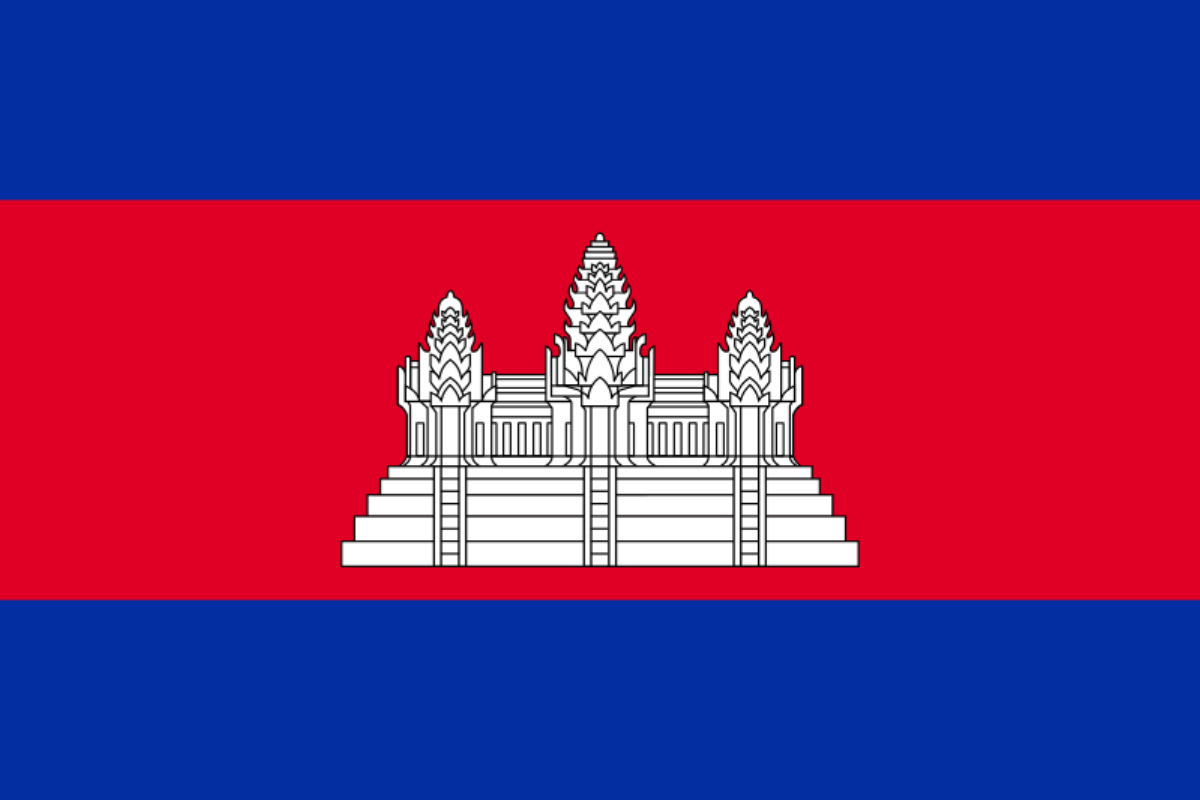The national animal of Cambodia is the kouprey, also known as the forest ox. This is a species of forest-dwelling bovine which is thought to be potentially extinct. No confirmed sighting of an individual has been reported since 1969, meaning that their conservation status is sadly uncertain. They are, nonetheless, a vitally important Cambodian symbol.
These animals were known to inhabit Southeast Asia for thousands of years and have been very important to many cultures in this part of the world for a long time.
It is still hoped that there are individuals in the wild but this is far from certain.
Let’s find out more.

What is the national animal of Cambodia?
The national animal of Cambodia is the kouprey.
This is a species of bovine which lives in forests and otherwise heavily wooded areas, and indeed teir name derives from the Khmer language and means “forest ox”.
In English, there are sometimes called either the forest ox or the grey ox.
They were not described by western naturalist science until 1937, when French zoologist Achille Urbain described a specimen kept at the Parc Zoologique de Paris.
They have a light build compared with other wild cattle, being intermediate in size at around 5.6 to 6.3 feet tall at the shoulders.
They are around 7 feet long from nose to rear end, and weigh anywhere from 700 to 900kg.
They have stretched nostrils and particularly long tails among wild bovines, anywhere from 3.3 to 3.6 feet long.
They are a highly sexually dimorphic species, meaning that the males and the females are considerably morphologically different.
They have both differently colored coats as well as markedly different horns.
The horns of the bull are wide and grow outwards, then arch upwards and forwards.
The horns of the cow, on the other hand, spiral upwards.
Bulls horns can be as long as 32 inches while a female’s are usually no more than half that length.
Bull kouprey develop large dewlaps, also, which the females lack.
These can be as long as 16 inches and in some rare cases it was reported the dewlap was so long it would drag along the floor.
They once ranged from southeastern Thailand, through southern Laos down to the west of Vietnam—centering them in Cambodia.
Archaeology, though, shows that they were once present as far north as China’s Yunnan province.
Why is the kouprey the national animal of Cambodia?
The kouprey permeates Cambodian culture in a variety of different ways and areas of life.
They are seen as symbols of strength, power, and force, yet at the same time of gentle wisdom and as spirits of the forests they inhabit.
Today, if they are still extant at all, they are endemic to Cambodia and thus represent a unique part of Cambodian wildlife.
They have been used as symbols on things like stamps and wild cattle like these are often very important to many cultures in this part of the world.
They also, on the other hand, are simply embodiments of Cambodia’s natural beauty.
Cambodia is a country filled with all sorts of unique wildlife, and yet this somewhat humble bovine was chosen as the national animal in part because it embodies the quiet, contemplative beauty of the Cambodian wilderness.
Now, that is not say all parts of the Cambodian wilderness are “quiet” in any sense—rather just that the forests can be haunting and ethereal places, sometimes almost chillingly silent.
The bigger question, though, is one of conservation.
As mentioned, the present state of this animal is currently not known for sure—so are the kouprey extinct?
Is the kouprey extinct?
The truth is we just don’t know if the kouprey is extinct.
Even with all of our modern equipment, finding a certain species can be incredibly difficult in environments like Cambodia’s wilds.
As mentioned, the last confirmed sighting of a kouprey was in 1969.
Since then, it has never been officially confirmed that one has been seen anywhere.
They may still be out there and they may have been seen by people who didn’t report the sighting—we simply don’t know.
Ultimately, then, the sensible answer at this point does seem to be that they are probably extinct.
They have not been sighted in more than half a century. Equally, many species thought to be extinct were later found, like the coelacanth—so you never know.
Could the kouprey be brought back?
If the kouprey does turn out to be extinct, there is no way to bring it back.
We don’t have the technology to do so even if we did possess any tissue or DNA samples of kouprey, even aside from any ethical questions about bringing them back.
It is an incalculable shame, but if the kouprey is indeed extinct, then the species is unfortunately lost to us forever, and all we have are the pictures of those extant individuals taken in the 20th Century.
Kouprey, then, are something of an enigma.
They have not been seen in more than fifty years, at least by any confirmed sighting.
However, many do still hold out hope that they continue to hold on and that there are still individuals out there in the wild.
More conservative opinions do generally hold that they are extinct, but nonetheless
Cambodia has immortalized the species through its decision to adopt them as the official national animal so that, at the very least, they are not forgotten.
